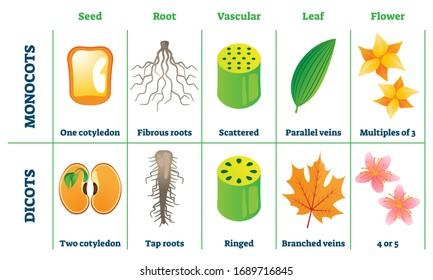Crystal your body by dint of seven Crystal Seeds!
Jenifer Theresal J1
1 Senior Dietician, Kauvery Hospital, Tennur, Trichy, India
Correspondence: Tel.: +91 8148420506; dietary.ktn@kauvery.in
Abstract
An edible seed is a seed that is suitable for human or animal consumption. Of the six majorplant parts, seeds are the dominant source of human calories and protein. The project shows the types of seeds and the characteristics of the types. Seeds are the real powerhouse of nutrients, from which an entire plant starts hence to include a seed in your diet is to open up areas of health and nutrition without much effort. There are many different types of seeds with various benefits.
Background
A seed is a mature ovule that comprises an embryo or a miniature undeveloped plant and food reserves, all enclosed within a protective seed coat. Seeds are a way of reproduction for all flowering plants. Every seed is capable of growing into a new plant under proper environmental conditions such as the right temperature, moisture and sunlight.
Define seed
A seed is defined as a small embryonic “plant,” enclosed by a covering called the seed coat, with some stored food materials.
What are the types of seeds?
A seed is of two types, namely
- (1) Monocotyledonous seed
- (2) Dicotyledonous seed
| Monocot seed | Dicot seed |
| The monocotyledonous seeds develop into adventitious roots due to the development of the radicle | The dicotyledonous seeds develop into a taproot system containing a primary root which develops from the radicle |
| Only one first leaf develops from the plumule during germination | Two first leaves develop from the plumule during germination |
| Plants developing from the monocot seeds have leaves with parallel venation | Plants developing from the dicot seeds have leaves with reticulate venation |
| Examples: wheat, rice, maize are examples of plants with monocotyledonous seeds | Examples: pea, lentil, tomato are examples of plants with dicotyledonous seeds |
Characteristics of Monocot Seeds
- Cotyledon is single with an embryo
- Pollen is single with the pore
- Parts of the flower are in multiples of three
- The parallel of major leaf veins
- Scattered stem vascular bundles
- Adventitious roots
- Absent of secondary growth
Characteristics of Dicot seeds
- It contains two cotyledons
- The outer covering of dicot seed is the seed coat, which has two layers called outer testa and inner tegmen
- The embryo stays within the seed coat and includes an embryonic axis and two cotyledons. These cotyledons are mostly fleshy and full of reserve food materials

Fig. 1. Structure of a monocot seed vs dicot.
| S.No | Seeds | Monocot or Dicot | Compound | Health Benefits |
| 1. | Flax Seed
(Linum usitatissimum) |
Dicotyledonous seed | Omega 3-fatty acids | Anti-ulcer activity |
| Proteins | Neurodegenerative disease prevention | |||
| Influence on hypertriglyceridemia | ||||
| Anti-hypertensive properties | ||||
| Dietary Fiber | Decrease total cholesterol in blood | |||
| Hunger suppression | ||||
| Micronutrient | Promotion of sodium excretion | |||
| Decrease blood pressure | ||||
| Antioxidant properties | ||||
| 2. | Halim/Asaliya Seed (Lepidium sativum)
|
Monocotyledonous seed | Proteins | Weight loss |
| Galactogogue | Increases Breastmilk production | |||
| Dietary Fiber | Benefits of gastrointestinal diseases | |||
| Phytochemicals | Regulate Menstrual Cycle | |||
| 3. | Pumpkin Seed (Cucurbita)
|
Dicotyledonous seed | Anti-Oxidant | Fend off cell-damaging compounds in the body |
| Flavonoids | Prevent cancer, artery hardening, and Alzheimer’s disease | |||
| Good Fat | MUFA and FUFA both reduce bad cholesterol levels and lower the risk of heart disease |
|||
| Magnesium | Including maintaining nerve and muscle function | |||
| Supporting a healthy immune system | ||||
| Keeping heartbeat steady | ||||
| Strengthening bones. | ||||
| 4. | Sunflower Seeds (Helianthus annuus) |
Dicotyledonous seed | Linolenic acid | Improves Skin & Hair Quality |
| Macro nutrients | anti-inflammatory effects | |||
| Phytochemicals | Regulates Estrogen and testosterone imbalances | |||
| Might Possess Antimicrobial Property | ||||
| 5. | Chia Seed (Salvia hispanica L)
|
Dicotyledonous seed | Amino acid | Production of hemoglobin and energy regulation |
| Responsible for healthy teeth, skin and fat metabolism | ||||
| Regulate blood sugar level | ||||
| Thiamine -B1 | healthy hair, brain and skinas well as important for nerve function | |||
| Potassium | Balance blood fluid | |||
| Zinc | Enhance the immune system, and sense organ | |||
| Myricetin | Enhibits Antibacterial activity | |||
| Calcium | Increased bone mineral density | |||
| 6. | Cucumber Seed (Cucumis sativus L)
|
Dicotyledonous seed | Magnesium | Regulate blood pressure |
| Antioxidant | Allow your body to function optimally | |||
| 7. | Watermelon seeds (Citrullus lanatus)
|
Dicotyledonous seed | Anti-inflammatory | Anti-Ulcerative Colitis Property |
In conclusion, these different types of seeds are a quick, easy, and great source of proteins, healthy fats, energy, minerals, and lots of vitamins, sprinkled over delicacies, making them more delicious. Seeds are the small pockets of energy and a storehouse of nutrients that the plant manufactures to help it reproduce. As a rule of thumb, many plants with edible plant parts, with seeds as a mode of multiplication have edible seeds.

Jenifer Theresal J
Senior Dietician
